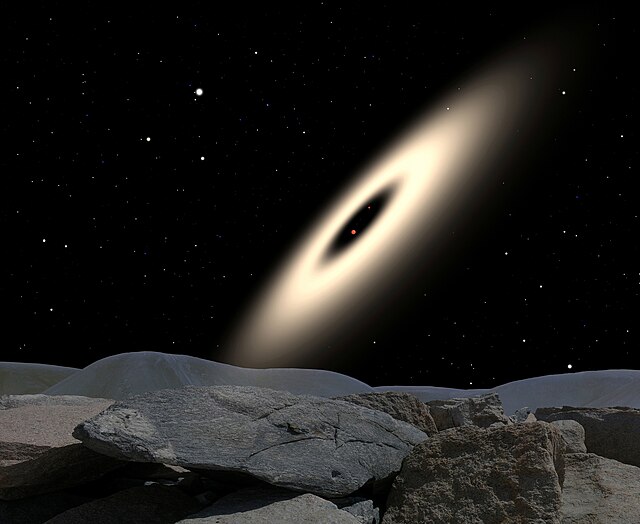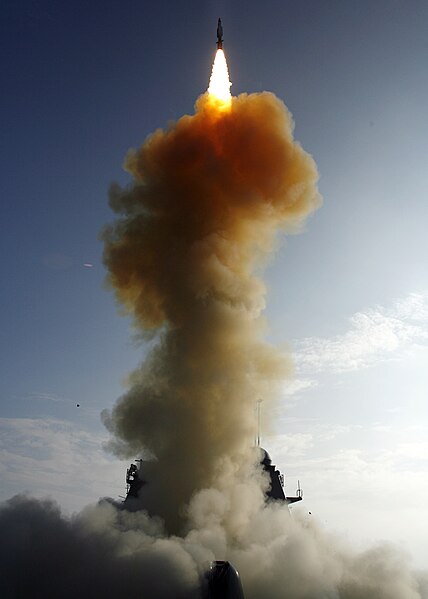Radiation pressure is mechanical pressure exerted upon a surface due to the exchange of momentum between the object and the electromagnetic field. This includes the momentum of light or electromagnetic radiation of any wavelength that is absorbed, reflected, or otherwise emitted by matter on any scale. The associated force is called the radiation pressure force, or sometimes just the force of light.
Soviet ruble coin commemorating Lebedev's discovery
The Pillars of Creation clouds within the Eagle Nebula shaped by radiation pressure and stellar winds.
A protoplanetary disk with a cleared central region (artist's conception).
Comet Hale–Bopp (C/1995 O1). Radiation pressure and solar wind effects on the dust and gas tails are clearly seen.
Outer space is the expanse beyond celestial bodies and their atmospheres. It contains ultra-low levels of particle densities, constituting a near-perfect vacuum of predominantly hydrogen and helium plasma, permeated by electromagnetic radiation, cosmic rays, neutrinos, magnetic fields and dust. The baseline temperature of outer space, as set by the background radiation from the Big Bang, is 2.7 kelvins.
The boundary between space and Earth, at an altitude of 100 km, roughly where the yellow line of airglow is visible.
The black background is outer space as seen from Earth's surface at night. The interplanetary dust cloud is illuminated and visible as zodiacal light, with its parts the false dawn, gegenschein and the rest of its band, which is visually crossed by the Milky Way
Because of the hazards of a vacuum, astronauts must wear a pressurized space suit while outside their spacecraft.
Conventional anti-satellite weapons such as the SM-3 missile remain legal under space law, even though they create hazardous space debris








